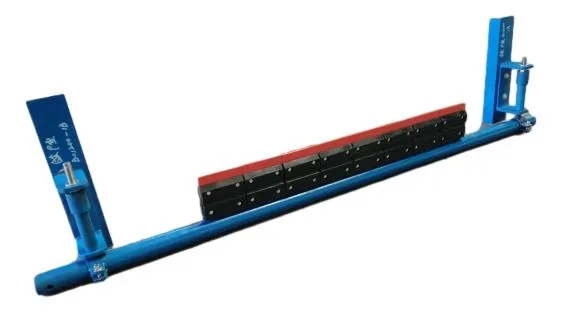 Afrikaans
Afrikaans  Albanian
Albanian  Amharic
Amharic  Arabic
Arabic  Armenian
Armenian  Azerbaijani
Azerbaijani  Basque
Basque  Belarusian
Belarusian  Bengali
Bengali  Bosnian
Bosnian  Bulgarian
Bulgarian  Catalan
Catalan  Cebuano
Cebuano  Corsican
Corsican  Croatian
Croatian  Czech
Czech  Danish
Danish  Dutch
Dutch  English
English  Esperanto
Esperanto  Estonian
Estonian  Finnish
Finnish  French
French  Frisian
Frisian  Galician
Galician  Georgian
Georgian  German
German  Greek
Greek  Gujarati
Gujarati  Haitian Creole
Haitian Creole  hausa
hausa  hawaiian
hawaiian  Hebrew
Hebrew  Hindi
Hindi  Miao
Miao  Hungarian
Hungarian  Icelandic
Icelandic  igbo
igbo  Indonesian
Indonesian  irish
irish  Italian
Italian  Japanese
Japanese  Javanese
Javanese  Kannada
Kannada  kazakh
kazakh  Khmer
Khmer  Rwandese
Rwandese  Korean
Korean  Kurdish
Kurdish  Kyrgyz
Kyrgyz  Lao
Lao  Latin
Latin  Latvian
Latvian  Lithuanian
Lithuanian  Luxembourgish
Luxembourgish  Macedonian
Macedonian  Malgashi
Malgashi  Malay
Malay  Malayalam
Malayalam  Maltese
Maltese  Maori
Maori  Marathi
Marathi  Mongolian
Mongolian  Myanmar
Myanmar  Nepali
Nepali  Norwegian
Norwegian  Norwegian
Norwegian  Occitan
Occitan  Pashto
Pashto  Persian
Persian  Polish
Polish  Portuguese
Portuguese  Punjabi
Punjabi  Romanian
Romanian  Russian
Russian  Samoan
Samoan  Scottish Gaelic
Scottish Gaelic  Serbian
Serbian  Sesotho
Sesotho  Shona
Shona  Sindhi
Sindhi  Sinhala
Sinhala  Slovak
Slovak  Slovenian
Slovenian  Somali
Somali  Spanish
Spanish  Sundanese
Sundanese  Swahili
Swahili  Swedish
Swedish  Tagalog
Tagalog  Tajik
Tajik  Tamil
Tamil  Tatar
Tatar  Telugu
Telugu  Thai
Thai  Turkish
Turkish  Turkmen
Turkmen  Ukrainian
Ukrainian  Urdu
Urdu  Uighur
Uighur  Uzbek
Uzbek  Vietnamese
Vietnamese  Welsh
Welsh  Bantu
Bantu  Yiddish
Yiddish  Yoruba
Yoruba  Zulu
Zulu conveyor system components
Understanding Conveyor System Components
Conveyor systems are an integral part of many industries, providing a reliable and efficient solution for transporting materials from one location to another. Their versatility and adaptability make them essential in manufacturing, warehousing, and distribution centers. To fully understand how these systems function, it's crucial to explore the key components that make up a conveyor system.
1. Frame The Backbone of the Conveyor
The frame acts as the structural foundation of a conveyor system. Typically made from durable materials like steel or aluminum, the frame is designed to support the weight of the loads being transported while maintaining stability. The design of the frame varies according to the type of conveyor system, be it belt, roller, or chain, and can be customized to fit specific applications.
2. Belting The Transport Medium
The belt is perhaps the most critical component of a belt conveyor system. Made from various materials such as rubber, plastic, or fabric, the belt’s material choice depends on the type of goods being transported. The belt's surface may also include textured patterns for enhanced grip. Belts are designed to endure wear and tear, providing smooth movement of items while minimizing slippage.
3. Rollers Ensuring Smooth Motion
Rollers are essential for the operation of conveyor systems. They facilitate the movement of the belt or the items being transported. There are different types of rollers, including idler rollers, which support the belt, and drive rollers, which propel it forward. The selection of roller types and their arrangement is critical to ensure minimal friction and optimal performance.
conveyor system components

4. Drive Mechanism Powering the System
The drive mechanism is responsible for moving the belt. It typically involves a motor connected to the drive roller. Various types of motors may be used, including electric, pneumatic, or hydraulic systems, depending on the application. Proper selection and placement of the drive mechanism are vital to ensure that the conveyor operates at the required speed and load capacity.
5. Controls Managing the System
Modern conveyor systems often incorporate advanced control systems that enhance functionality and efficiency. Control panels or programmable logic controllers (PLCs) allow operators to manage and monitor the entire conveyor operation. Features such as speed control, emergency stop functions, and automated systems improve both safety and productivity.
6. Accessories Enhancing Functionality
To optimize conveyor performance, various accessories can be added. These include side guards for safety, plows for material gathering, and thresholds for load separation. Safety features like emergency stop buttons and safety guards are also essential to protect workers and inventory.
Conclusion
In summary, conveyor system components work together to create an effective transportation solution in various industries. By understanding these components—including the frame, belting, rollers, drive mechanism, controls, and accessories—businesses can optimize their conveyor systems for efficiency and productivity. Choosing the right components and ensuring their proper maintenance will lead to a reliable and effective conveyor system, streamlining operations and enhancing overall performance.
-
Revolutionizing Conveyor Reliability with Advanced Rubber Lagging PulleysNewsJul.22,2025
-
Powering Precision and Durability with Expert Manufacturers of Conveyor ComponentsNewsJul.22,2025
-
Optimizing Conveyor Systems with Advanced Conveyor AccessoriesNewsJul.22,2025
-
Maximize Conveyor Efficiency with Quality Conveyor Idler PulleysNewsJul.22,2025
-
Future-Proof Your Conveyor System with High-Performance Polyurethane RollerNewsJul.22,2025
-
Driving Efficiency Forward with Quality Idlers and RollersNewsJul.22,2025





























